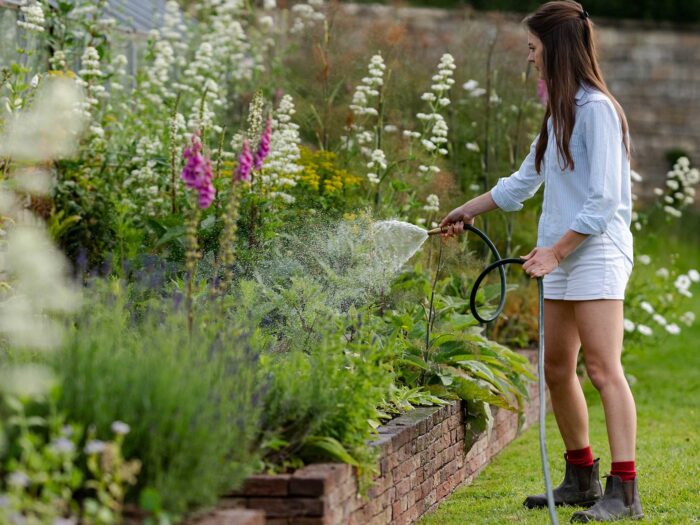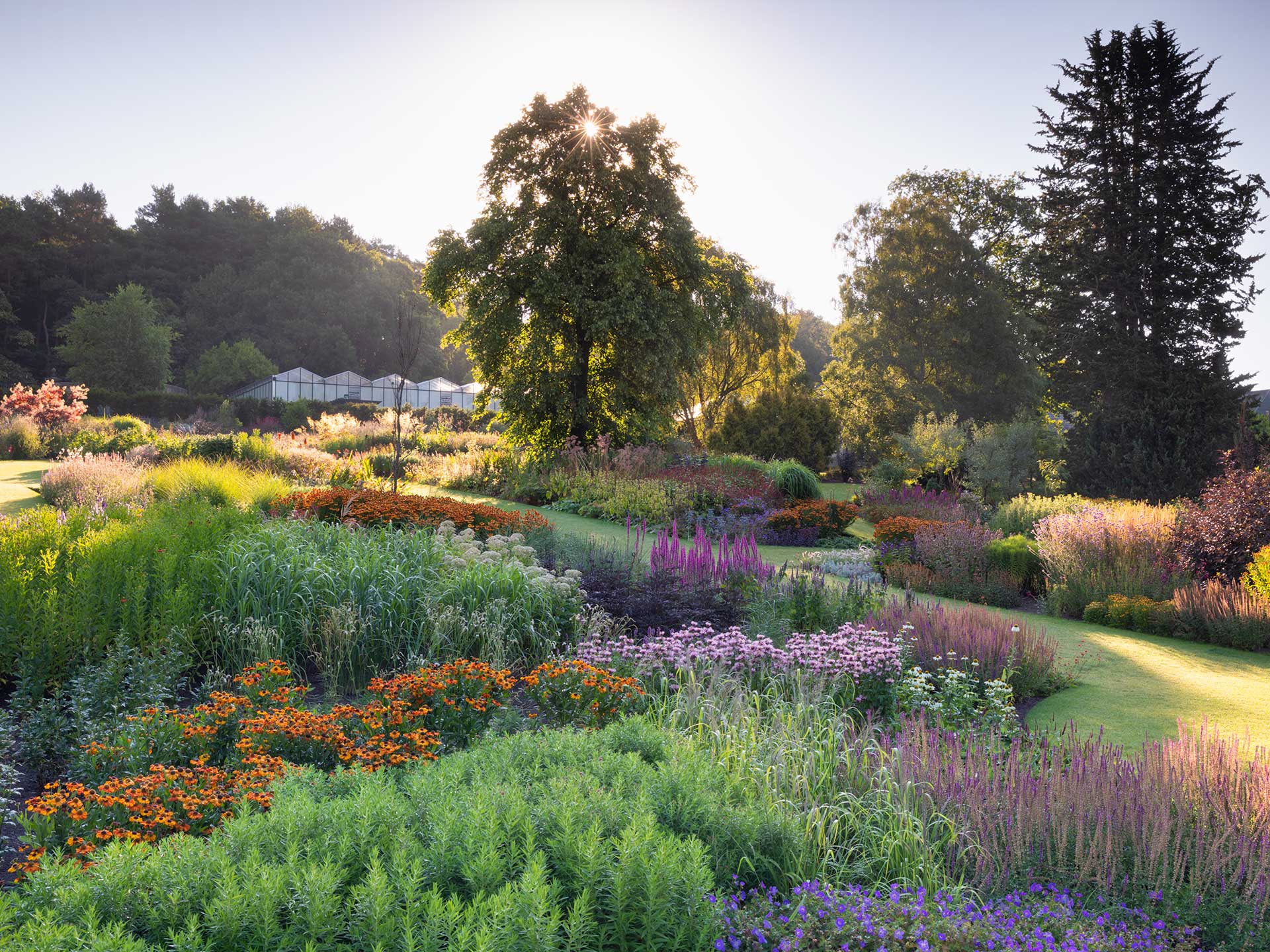
Image credit: RHS Harlow Carr
How to plant the perfect border
Borders are the buzzword of the gardening world, seen everywhere from the RHS Chelsea Flower Show’s gardens to the plumes of wildflower borders that line our hedgerows.
There are many incredible gardens to look to for how to plant the perfect border, like the master of the spectacular border, Dutch landscape architect Piet Oudolf, who is famed for his beautiful, natural planting.
Discover his work at Hauser & Wirth in Somerset or his largest work to date at the two-acre Oudolf Landscape at RHS Wisley, which will be made up of 36,000 perennial plants, a third of which have been propagated from existing material in the garden. Whatever style of border you choose, whether you’re aiming for pure aesthetic appeal to bringing biodiversity to your garden, or a mixture of both, here’s how to plant the perfect border.
Spend time planning
While your borders might not be as expansive as Piet Oudolf’s at RHS Wisley (pictured below), planning and sketching out what you want is still important. There are a number of factors to balance, and firstly, you should think about your border’s purpose. Is it purely decorative? Are you trying to define borders in your garden? Or maybe you’re trying to attract butterflies and bees to increase pollinators. Then, get a checklist together.
Guy Barter, RHS chief horticulturist, said: “When it comes to planting a border, things to think about include when you want the plants to flower, how high you want them to grow, how wide the border is and how much time you’re prepared to spend maintaining it. Also think about whether it’s in sun or shade, and whether you want a cool, refreshing effect or a vibrant sparkly effect, and where you live in the country and what the local microclimate is.
“Choose the right plants for the site and soil, plant them about half of their eventual height apart, and water them in dry weather. Typically, you would place shorter ones at the front and longer ones at the back, but don’t be afraid to play around and experiment.”
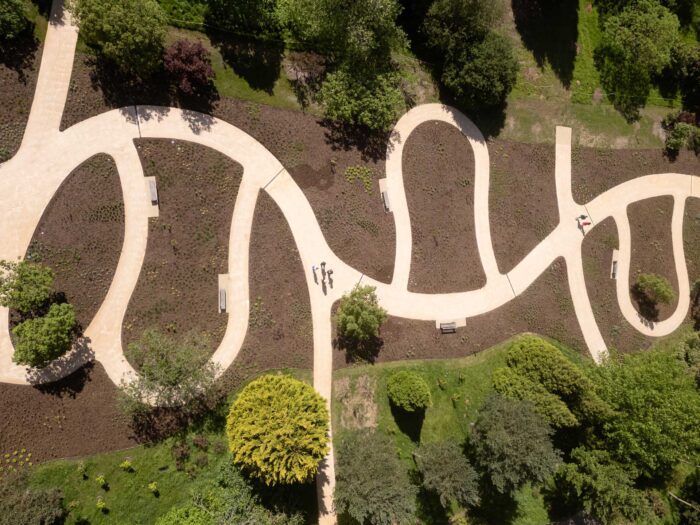
Know your soil
Given that soil is your foundation, determining what type you have will guide what plants will work in your border and where you plant them. The type of soil you have will determine the amount of water the soil can hold, the rate at which water moves through the soil, and how fertile the soil is.
Your soil is likely to fall somewhere on the soil textural triangle (pictured below). You can determine your rough soil type by just feeling it and rolling it in your hands. RHS says, “Sandy soil has a gritty element – you can feel sand grains within it, and it falls through your fingers.”
And “clay soil has a smearing quality and is sticky when wet. It is easily rolled into a long, thin sausage and can be smoothed to a shiny finish by rubbing with a finger.” Meanwhile, “pure silt soils are rare, especially in gardens. They have a slightly soapy, slippery texture and do not clump easily.” They add that “if soil froths when placed in a jar of vinegar, then it contains free calcium carbonate (chalk) or limestone and is lime-rich.”

Another important factor about soil is how alkaline or acidic it is. You can buy a simple pH testing kit at your local garden centre or online to test it yourself. A neutral pH is around 6.5 to 7 and is considered ideal for planting. A pH level below 6.5 indicates acidic soil, while anything over 7 suggests alkalinity.
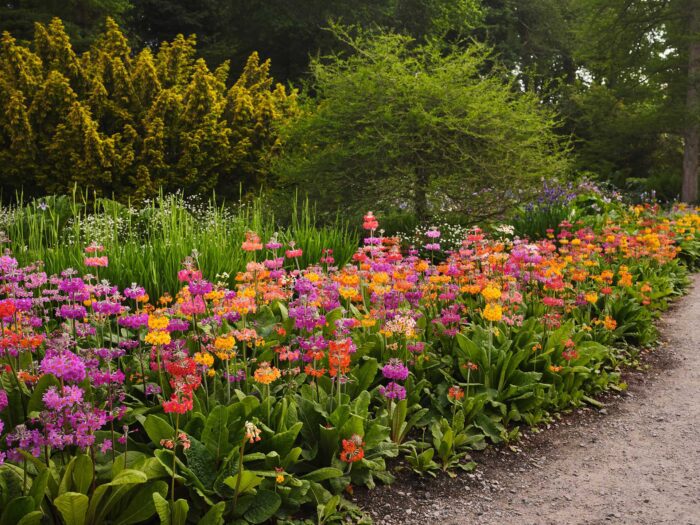
Think about the light
Known as the aspect (the direction that a particular area or garden faces in relation to the sun), thinking about how much light your border will receive is crucial for selecting the right plants. North-facing gardens need plants that thrive in cool and shady spots, and require the least amount of sunlight. South-facing gardens benefit from plants that love direct sunlight. East-facing gardens receive afternoon shade and morning sun, while west-facing gardens experience the opposite.
Beautiful cone-shaped echinacea, colourful salvia, tall verbena with its tint of purple flowers, fragrant lavender, tubular penstemon (which comes in shades of pink, purple, and red), and the genus cosmos all make great full-sun (getting over six hours of direct sunlight) border plants. For partially shady borders (getting around four to six hours of direct sunlight) try hosta, bleeding hearts, feathery astilbe, hydrangea, azalea, and caladiums.
Consider the plant’s position in the border and graduate tall plants at the back, followed by medium plants, and then ground cover plants, ensuring none of them block each other’s light. When planting, position them while still in their pots in your border so you can move them around to achieve the right height, shape, and color combination. Start planting from the back first.
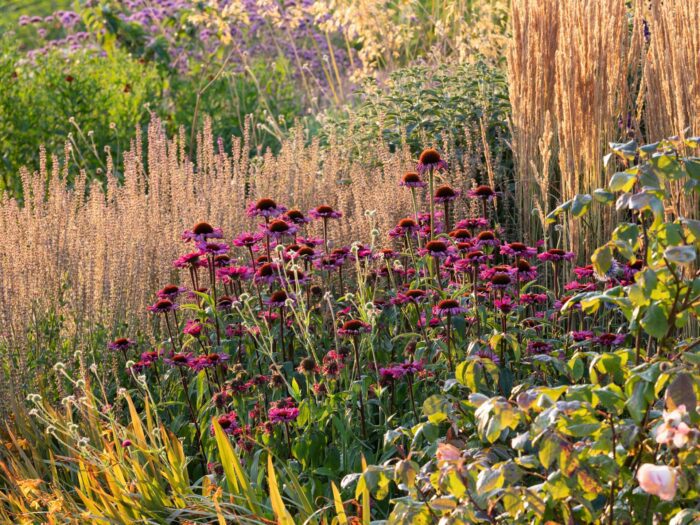
Decide your planting style
Once you’ve ascertained your soil type and aspect, think about what planting style you want, which will be influenced by both growing style and preference. The popular cottage garden look has a more informal layout and there’s been a huge movement towards wildflower borders in recent years. They enhance our connection to nature, support wildlife and encourage pollinators, as well as being one of the easiest types of border to maintain.
If you live in warmer climes, even in the UK, you might consider a tropical garden (or a jungle garden), so go for things that are lush and vibrant. Japonica with its glossy leaves makes a good shrub border plant, and hardy banana leaf plants (musa basjoo) can tolerate temperatures down to -10 degrees Celsius (although it must be properly protected). Canna lilies, alstroemeria and hibiscus will bring colour to a tropical border.
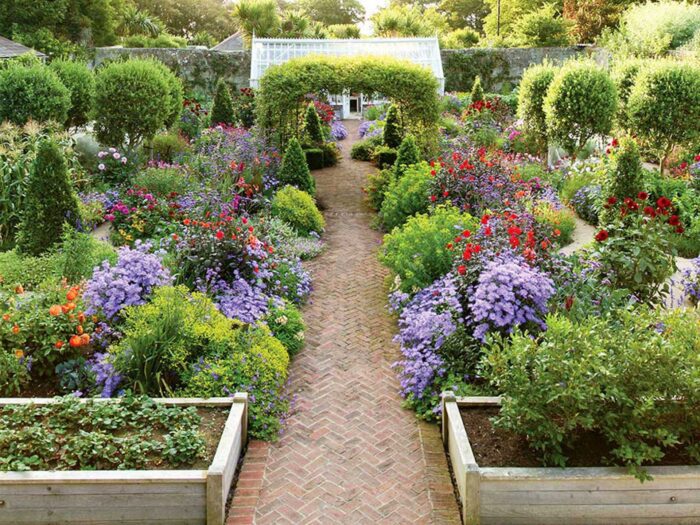
Add resilient planting into your borders
Another border planting style that’s becoming more important as our climate changes is drought-resistant planting, otherwise known as xeriscaping, which Treehugger defines as “landscaping with minimal or no use of water other than what nature provides”.
Hardy plants like lavender and rosemary, rock rose, and grasses like Mexican feather grass all work well. Drought-resistant herb borders are another great way of introducing resilient and practical planting and water-wise gardening. Sage, thyme, oregano and bay laurel all thrive in full sun and well-drained soil.
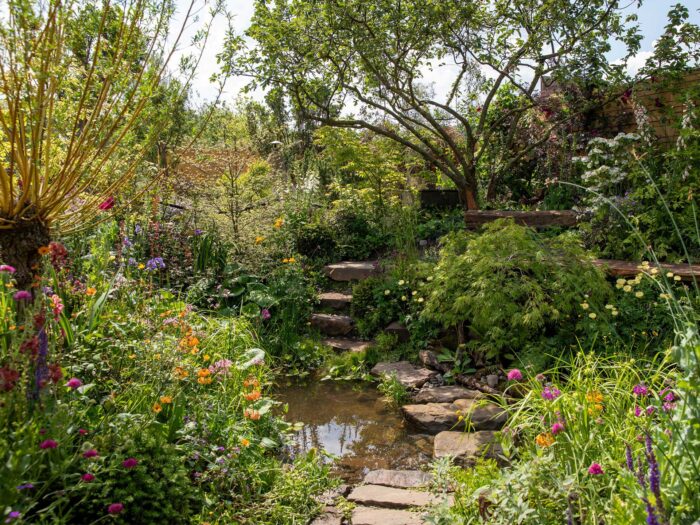
Try a woodland border
For very shady gardens, try a woodland-style planting scheme in your borders. RHS describe how “woodland gardens are the perfect places to loosen our grip on nature”. And they explain how to think about shape and form, for example “intricate shapes of ferns mingle with strappy grasses and rounded euphorbias to create a green tapestry”.
Foxgloves, primroses and bluebells are also great for growing in shady spots and under trees. Hellebores are another brilliant plant for woodland borders and they often self-seed freely. Woodland plants tend to prefer moist and well-drained soil that is rich in nutrients and organic matter, replicating its natural surroundings.
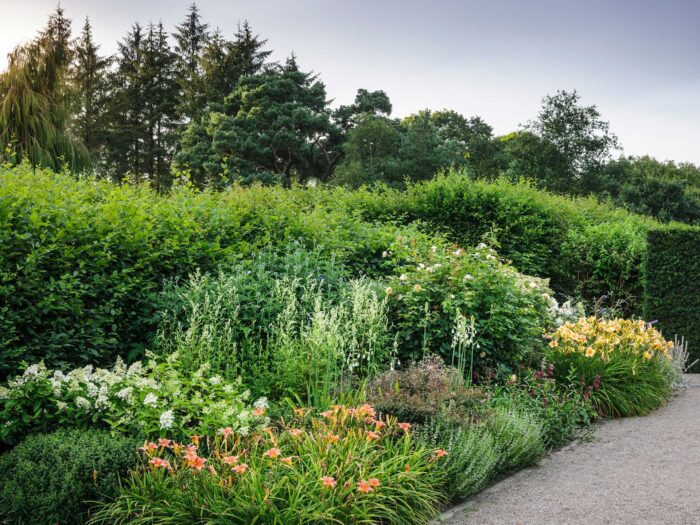
Maintain your borders
It’s one thing to plant the perfect border, but keeping it looking perfect can be trickier. Keep your borders regularly watered, and think about how you do it. Plants thrive with even moisture, so don’t overwater, it will waterlog the plant and the root cells will die. Overwatering can also lead to rot in the leaves, so always water at the root. Think about what time you water, as watering late at night or early in the morning will avoid the midday sun and help the soil absorb the most water.
Weed and prune your borders regularly and keep an eye on the perennials; if some are taking over the border, you can lift and divide them. Gardener’s World suggests that you should divide “summer-flowering plants in autumn or spring, while spring-flowering plants should be divided in summer to give them time to establish before the following year”. Dig them up with a spade and gently tease the rootball apart, before watering them well and replanting in another location.
